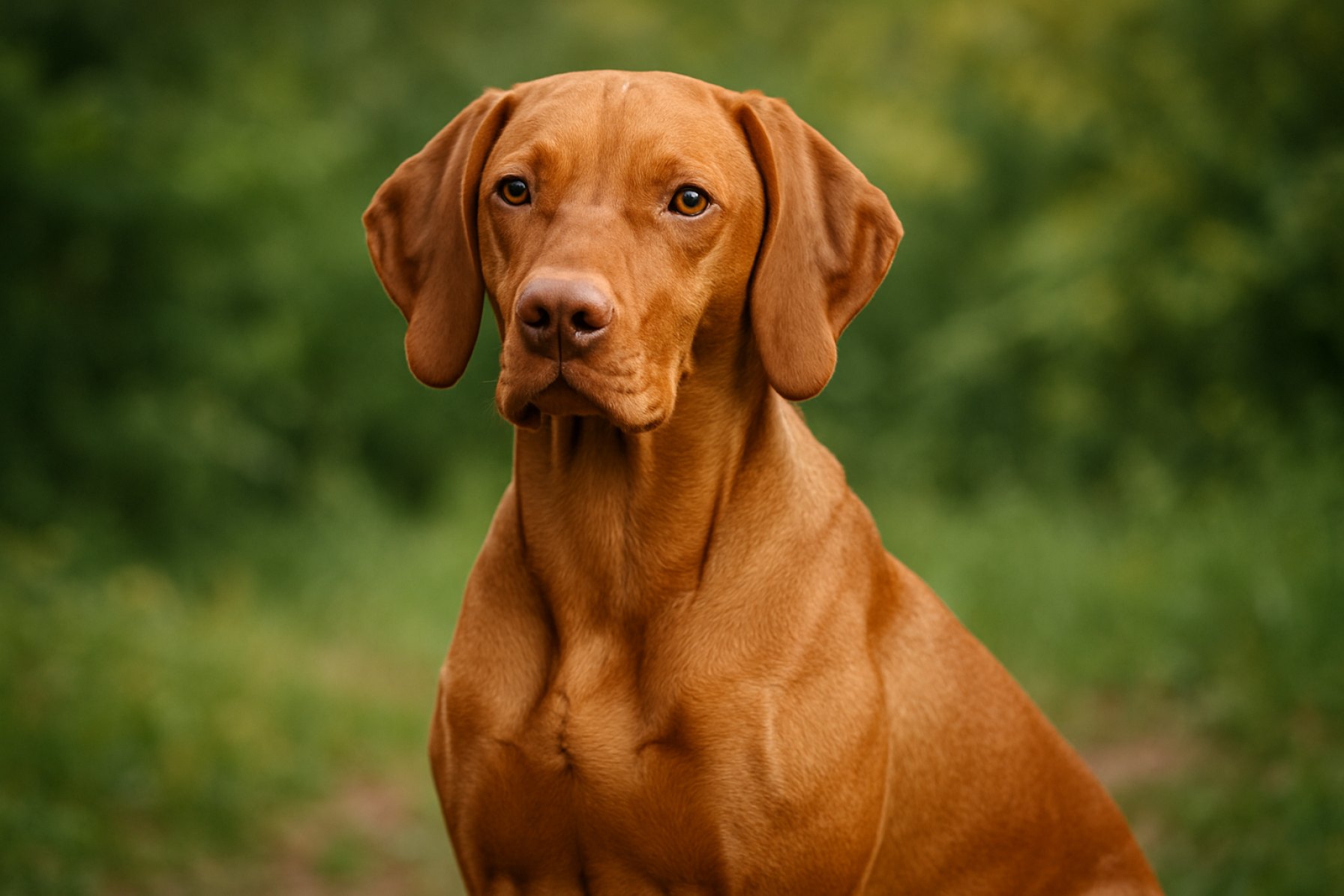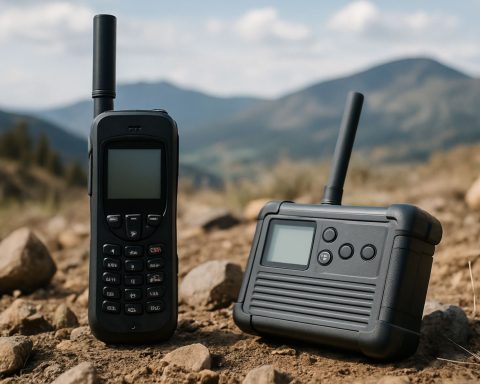Discover the Vizsla: Hungary’s Athletic and Affectionate Canine Marvel. Uncover What Makes This Breed a Beloved Family Favorite and Sporting Partner.
- Origins and History of the Vizsla
- Physical Characteristics and Appearance
- Temperament and Personality Traits
- Exercise Needs and Activity Levels
- Training Tips and Intelligence
- Health Considerations and Lifespan
- Grooming and Care Requirements
- Ideal Home Environment and Family Compatibility
- Common Challenges and Solutions
- Is the Vizsla Right for You?
- Sources & References
Origins and History of the Vizsla
The Vizsla, often referred to as the Hungarian Pointer, boasts a rich and storied history that traces back several centuries in Central Europe. The breed’s origins are closely intertwined with the Magyar tribes who settled in the Carpathian Basin around the 9th century. These early settlers required a versatile hunting companion capable of tracking, pointing, and retrieving game across varied terrain. Over generations, the Vizsla was selectively bred for its keen nose, agility, and gentle temperament, making it an indispensable asset to Hungarian nobility and hunters alike. Historical records and ancient art, including 10th-century etchings and medieval manuscripts, depict dogs resembling the modern Vizsla, underscoring the breed’s longstanding presence in Hungarian culture.
The Vizsla’s development was influenced by various pointing and hound breeds, but it maintained a distinct identity due to its unique combination of speed, stamina, and affectionate nature. The breed faced significant challenges during the World Wars, with its population dwindling dangerously low. Dedicated breeders in Hungary and, later, in other countries, worked tirelessly to preserve the Vizsla, leading to its eventual recognition by major kennel clubs. The American Kennel Club officially recognized the Vizsla in 1960, cementing its status as a beloved sporting and companion dog worldwide. Today, the Vizsla is celebrated not only for its historical significance but also for its adaptability and enduring bond with humans.
Physical Characteristics and Appearance
The Vizsla is renowned for its elegant and athletic appearance, which reflects its origins as a versatile hunting companion. This medium-sized breed typically stands between 21 to 24 inches at the shoulder and weighs 44 to 60 pounds, with males generally being larger than females. The Vizsla’s most distinctive feature is its short, dense, and smooth golden-rust coat, which lies close to the body and requires minimal grooming. This unique coloration is a hallmark of the breed and is recognized by major kennel clubs, including the American Kennel Club.
The breed’s head is lean and noble, with a moderately broad skull, a pronounced stop, and a square-shaped muzzle. Vizslas have expressive, medium-sized eyes that are typically a shade darker than their coat, and their long, silky ears hang close to the cheeks, enhancing their alert and gentle expression. The tail is customarily docked to about two-thirds of its original length in countries where this practice is permitted, and it is carried horizontally when the dog is in motion.
Vizslas possess a well-muscled, athletic build, with a deep chest and a straight, strong back, contributing to their agility and stamina in the field. Their overall appearance is one of balance, grace, and power, making them not only effective working dogs but also striking companions in the show ring. For more detailed breed standards, refer to the The Kennel Club.
Temperament and Personality Traits
The Vizsla is renowned for its affectionate and gentle temperament, making it a beloved companion for families and active individuals alike. This breed is highly social and thrives on human interaction, often forming strong bonds with its owners and displaying a pronounced desire to be involved in all family activities. Vizslas are known for their sensitivity; they respond best to positive reinforcement and gentle guidance, as harsh training methods can lead to anxiety or withdrawal. Their intelligence and eagerness to please make them highly trainable, but they also require consistent mental stimulation to prevent boredom-related behaviors.
Vizslas are energetic and playful, with a natural athleticism that suits them to a variety of activities, from running and hiking to agility and obedience competitions. Their high energy levels mean they are best suited to homes where they receive ample daily exercise and engagement. Despite their lively nature, Vizslas are also known for their calm demeanor indoors, provided their physical and mental needs are met.
This breed is often described as a “velcro dog” due to its tendency to stick close to its people, seeking constant companionship. While this trait endears them to many, it also means Vizslas can be prone to separation anxiety if left alone for extended periods. Early socialization is important to ensure they are well-adjusted around other animals and strangers. Overall, the Vizsla’s temperament combines loyalty, affection, and intelligence, making it a versatile and loving addition to active households American Kennel Club The Kennel Club.
Exercise Needs and Activity Levels
Vizslas are renowned for their high energy levels and athleticism, making them one of the most active dog breeds. Originally bred as hunting dogs, Vizslas require significant daily exercise to maintain their physical and mental health. Experts recommend at least one to two hours of vigorous activity each day, which can include running, hiking, swimming, or engaging in canine sports such as agility and obedience trials. Without sufficient exercise, Vizslas may develop behavioral issues such as excessive barking, chewing, or restlessness due to pent-up energy.
Mental stimulation is equally important for this intelligent breed. Activities like scent work, puzzle toys, and advanced training sessions help keep their minds engaged and prevent boredom. Vizslas thrive in active households where they can participate in family activities and outdoor adventures. They are not well-suited to sedentary lifestyles or being left alone for extended periods, as they are prone to separation anxiety and destructive behaviors when under-stimulated.
Potential owners should be prepared to commit time and energy to meet the Vizsla’s exercise needs. Regular off-leash play in secure areas is ideal, as Vizslas have a strong prey drive and may chase after small animals. For more detailed guidance on exercise requirements and breed characteristics, consult resources from the American Kennel Club and the The Kennel Club (UK).
Training Tips and Intelligence
Vizslas are renowned for their intelligence and eagerness to please, making them highly trainable companions. Their keen minds thrive on mental stimulation, and they quickly pick up on commands and routines. However, their sensitive nature means that positive reinforcement methods—such as treats, praise, and play—are far more effective than harsh corrections. Consistency and patience are key, as Vizslas can become anxious or stubborn if training is too forceful or inconsistent.
Early socialization is crucial for Vizslas. Exposing them to a variety of people, environments, and other animals helps prevent shyness or overexcitement in new situations. Obedience classes are highly recommended, not only to teach basic commands but also to provide structured socialization opportunities. Because Vizslas are energetic and easily bored, incorporating games, scent work, and agility exercises into training sessions can keep them engaged and mentally satisfied.
Due to their intelligence, Vizslas may develop undesirable behaviors—such as excessive barking or destructive chewing—if left unstimulated or under-exercised. Providing puzzle toys, regular training sessions, and ample physical activity can help channel their energy positively. Owners should also be aware that Vizslas form strong bonds with their families and may experience separation anxiety if left alone for extended periods. Crate training and gradually increasing alone time can help mitigate this issue.
For more detailed guidance on training and understanding the Vizsla’s temperament, resources from the American Kennel Club and the The Kennel Club offer valuable insights.
Health Considerations and Lifespan
The Vizsla is generally regarded as a healthy and robust breed, with a typical lifespan ranging from 12 to 15 years. However, like all purebred dogs, Vizslas are predisposed to certain hereditary health conditions that prospective owners should be aware of. Among the most common concerns are hip dysplasia, a malformation of the hip joint that can lead to arthritis and mobility issues, and epilepsy, which may manifest as recurrent seizures. Responsible breeders routinely screen for these conditions to minimize their prevalence in the breed population (American Kennel Club).
Other health issues occasionally seen in Vizslas include progressive retinal atrophy (PRA), a degenerative eye disorder that can result in blindness, and hypothyroidism, which affects the dog’s metabolism. Additionally, Vizslas may be prone to certain types of cancers and allergies. Regular veterinary check-ups, a balanced diet, and appropriate exercise are essential for maintaining their health and well-being (Vizsla Club of America).
Preventive care, such as vaccinations, parasite control, and dental hygiene, also plays a crucial role in extending the Vizsla’s lifespan. Early detection and management of health issues can significantly improve quality of life. Prospective owners are encouraged to seek puppies from reputable breeders who provide health clearances for both parents, ensuring a healthier start for their new companion (Orthopedic Foundation for Animals).
Grooming and Care Requirements
The Vizsla’s grooming and care requirements are relatively straightforward, thanks to their short, sleek coat. Regular brushing—about once a week with a soft bristle brush or grooming mitt—helps remove loose hair and distribute natural oils, keeping their coat shiny and healthy. Vizslas are considered low shedders, but they do shed year-round, so consistent grooming minimizes hair around the home. Bathing is only necessary when the dog becomes noticeably dirty or develops an odor, as over-bathing can strip essential oils from their skin.
Ear care is particularly important for Vizslas, as their floppy ears can trap moisture and debris, increasing the risk of infections. Owners should check and gently clean their ears weekly using a vet-recommended solution. Dental hygiene is another key aspect; brushing their teeth several times a week helps prevent tartar buildup and gum disease. Nails should be trimmed regularly, typically every few weeks, to prevent discomfort or injury.
Vizslas are an active breed and require ample daily exercise to maintain their physical and mental health. Without sufficient activity, they may develop behavioral issues or anxiety. Activities such as running, hiking, and interactive play are ideal. Additionally, regular veterinary checkups and vaccinations are essential for overall well-being. For more detailed care guidelines, refer to the American Kennel Club and the The Kennel Club.
Ideal Home Environment and Family Compatibility
The Vizsla is renowned for its affectionate nature and strong desire to be part of family life, making it an excellent companion for active households. This breed thrives in environments where it receives ample attention, exercise, and mental stimulation. Vizslas are highly social and can develop separation anxiety if left alone for extended periods, so they are best suited to homes where someone is present most of the day or where arrangements can be made for their companionship. Their gentle temperament and patience make them well-suited for families with children, although supervision is recommended with very young kids due to the breed’s exuberance and energy.
A home with a securely fenced yard is ideal, as Vizslas are athletic and require daily opportunities to run and play. Apartment living can be successful if owners are committed to providing sufficient exercise and enrichment. Vizslas generally get along well with other dogs and can coexist with cats if properly socialized from a young age. However, their strong prey drive means caution should be exercised around smaller pets.
The breed’s sensitivity and eagerness to please make them responsive to positive reinforcement training methods. They are happiest when included in family activities, whether it’s hiking, jogging, or simply spending time together. Prospective owners should be prepared for a long-term commitment to meeting the Vizsla’s physical and emotional needs, as this breed forms deep bonds with its human companions and does not do well in isolation American Kennel Club.
Common Challenges and Solutions
Vizslas are renowned for their affectionate nature and high intelligence, but these same traits can present unique challenges for owners. One of the most common issues is separation anxiety. Vizslas form strong bonds with their families and may become distressed when left alone for extended periods. This can lead to destructive behaviors such as chewing or excessive barking. To address this, it is recommended to gradually acclimate the dog to being alone, provide interactive toys, and consider crate training as a safe space (American Kennel Club).
Another challenge is their high energy level. Vizslas require significant daily exercise and mental stimulation. Without adequate outlets, they may develop behavioral problems or become hyperactive. Solutions include regular long walks, runs, agility training, and engaging games like fetch or scent work. Consistent exercise not only keeps them physically fit but also helps manage their energy and reduces anxiety (Vizsla Club of America).
Training can also be a hurdle, as Vizslas are sensitive and may not respond well to harsh correction. Positive reinforcement methods, such as treats and praise, are most effective. Early socialization is crucial to prevent shyness or overexcitement around strangers and other animals. Finally, their short coat makes them prone to skin irritations and requires regular checks, especially after outdoor activities. By understanding these challenges and implementing proactive solutions, owners can ensure a happy, well-adjusted Vizsla.
Is the Vizsla Right for You?
Deciding if the Vizsla is the right dog for you requires careful consideration of the breed’s unique characteristics and needs. Vizslas are highly energetic, intelligent, and affectionate dogs, originally bred for hunting and retrieving. They thrive in active households where they receive ample physical exercise and mental stimulation. Daily vigorous activities such as running, hiking, or agility training are essential to prevent boredom and destructive behaviors. If you lead a sedentary lifestyle or are away from home for long periods, a Vizsla may not be the best fit.
Vizslas are known for their strong attachment to their families, often referred to as “velcro dogs” because they prefer to be close to their owners at all times. This trait makes them excellent companions but can also lead to separation anxiety if left alone frequently. Early socialization and consistent, positive training are crucial, as Vizslas are sensitive and respond best to gentle guidance rather than harsh discipline.
Their short, sleek coat requires minimal grooming, but they do shed and need regular brushing. Vizslas are generally healthy, but prospective owners should be aware of breed-specific health concerns such as hip dysplasia and certain genetic conditions. Responsible breeders will screen for these issues (American Kennel Club).
In summary, the Vizsla is ideal for active individuals or families who can provide companionship, exercise, and mental engagement. If you are seeking a loyal, energetic, and affectionate dog—and can meet their needs—the Vizsla may be a perfect addition to your home.









